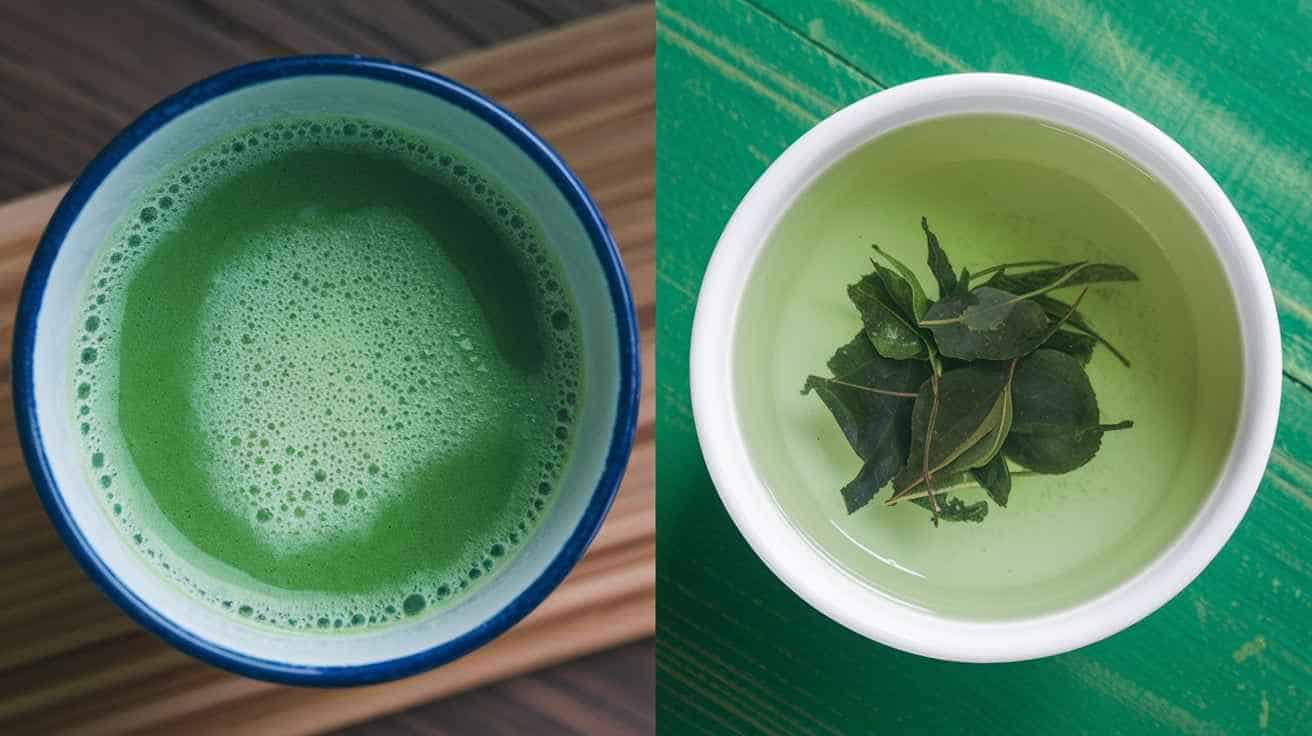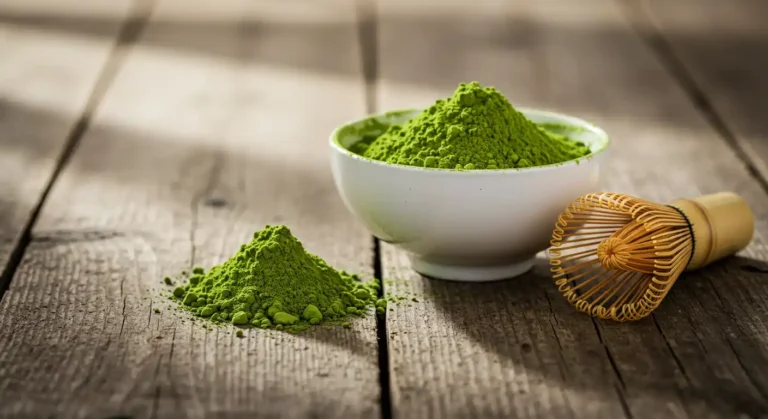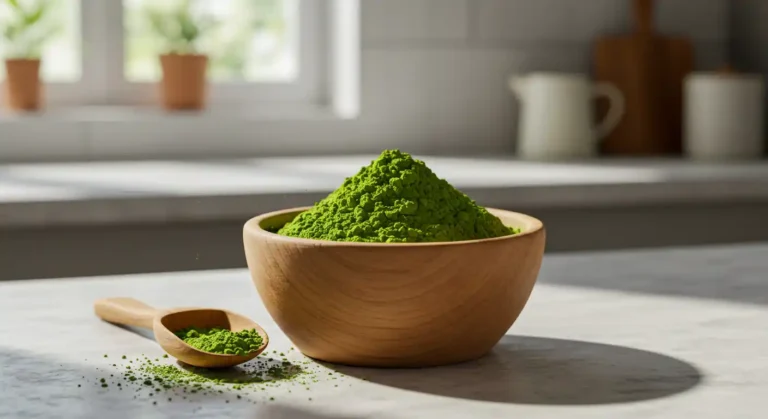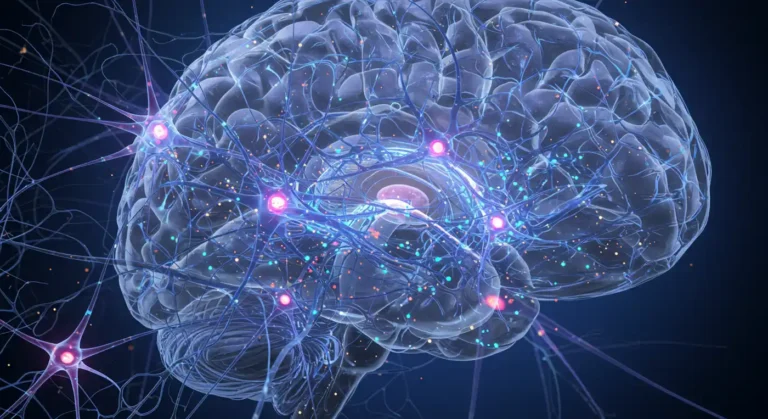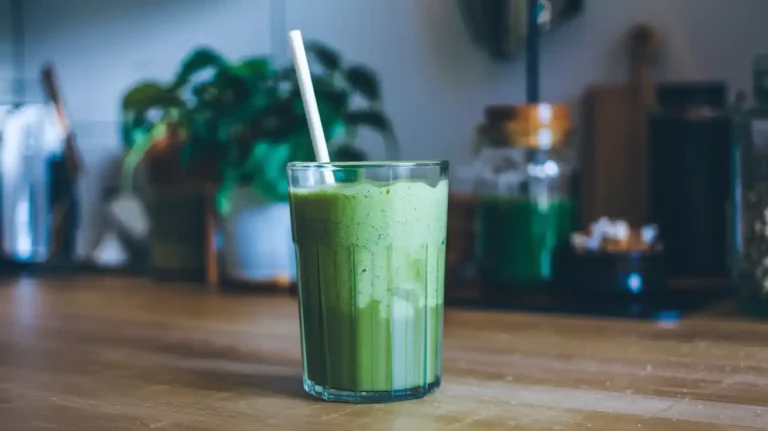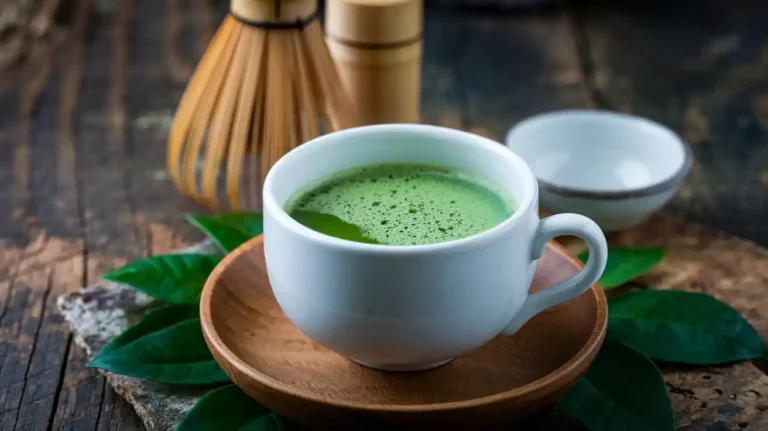When we talk about green tea and matcha, we’re really getting into a cool backstory of traditions, fresh ideas, and feeling good. Just imagine being in a foggy Japanese tea field, where farmers for ages have perfected their skills into something truly special.
This is where our tale starts—a story of two special teas that, while they might look alike, have big differences that can change how you think about health and food.
We’ll take a close look at the world of green tea and matcha showing you their special traits, how they’re made, and their amazing health perks.
If you’re into wellness, just starting to explore biohacking, or just want to know more about these special drinks, this guide will give you info that goes way beyond your average tea article.
Disclosure: We partner with companies that offer products to help our readers. If you purchase through our links, we earn a commission at no extra cost to you.
The Difference Between Matcha and Green Tea
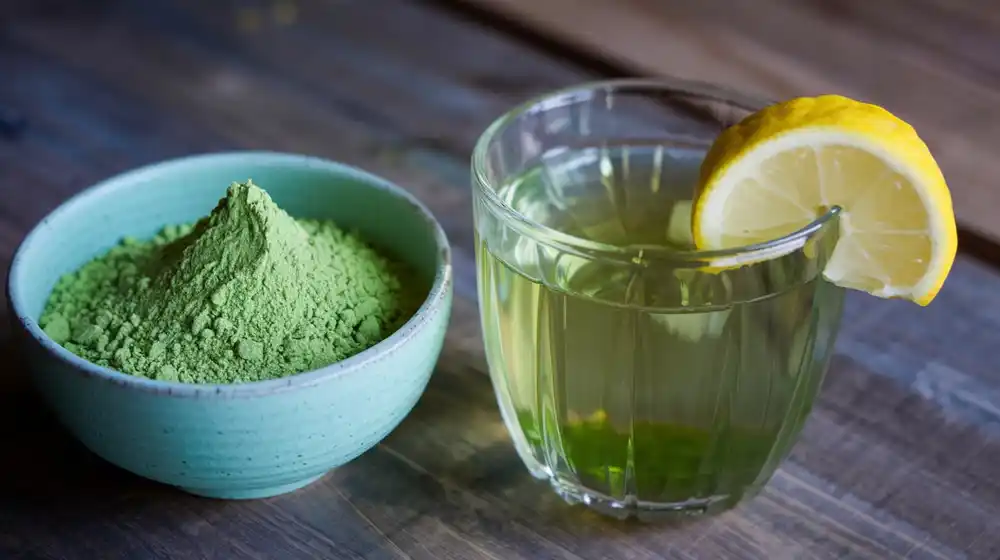
Is matcha better than green tea?
If you really want to get at what makes matcha tea special, you gotta check out how it’s different from regular green tea and look into their common roots and how they’ve both evolved over time.
History of Matcha Green Tea: Where a Thousand-Year Tradition Began
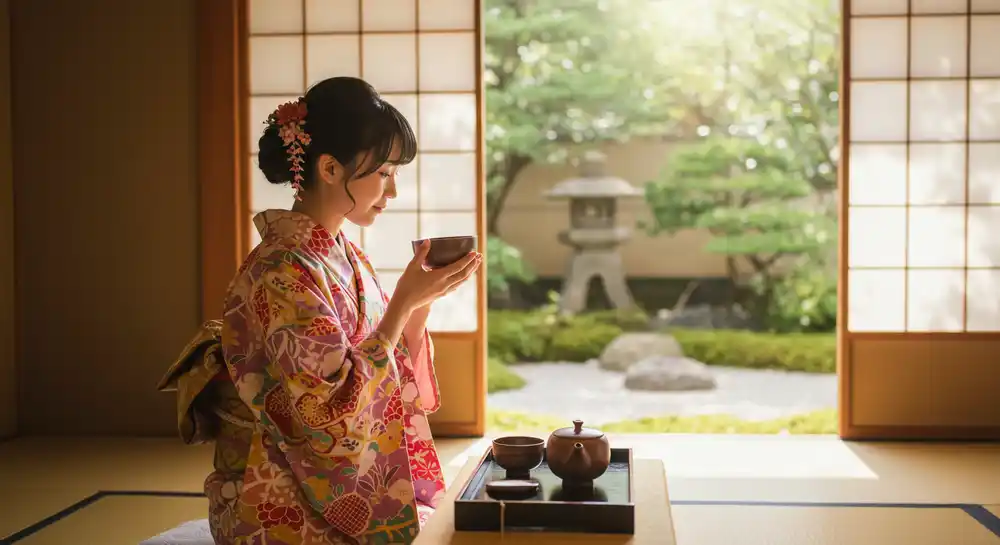
The story of tea is as old as civilization itself.
Originating in China at around 2737 BCE, tea has traveled through centuries, transforming from a medicinal herb to a global cultural icon. The very first recorded tea drinker was the Chinese Emperor Shen Nong, legendary for his discovery of botany.
The matcha and green tea history goes way back, starting in the 8th century, when they began growing tea in Japan. By the 12th century, Zen Buddhist monks were all about matcha for their meditation sessions, and by the 17th century, tea had turned into something people traded all over the world, making it a big deal in cultures everywhere.
In Japan, green tea and matcha are not just something you drink; it’s a vibe that speaks of harmony, respect, purity, and chill. The traditional Japanese tea ceremony, or “chanoyu”, turns making tea into this cool meditative art, especially with matcha.
From fancy royal courts to chill wellness communities today, tea has totally changed over time—acting as a go-to remedy, a key part of social hangouts and ceremonies, and now a big deal in modern health and performance hacks.
Matcha vs Green Tea: Botanical Differences
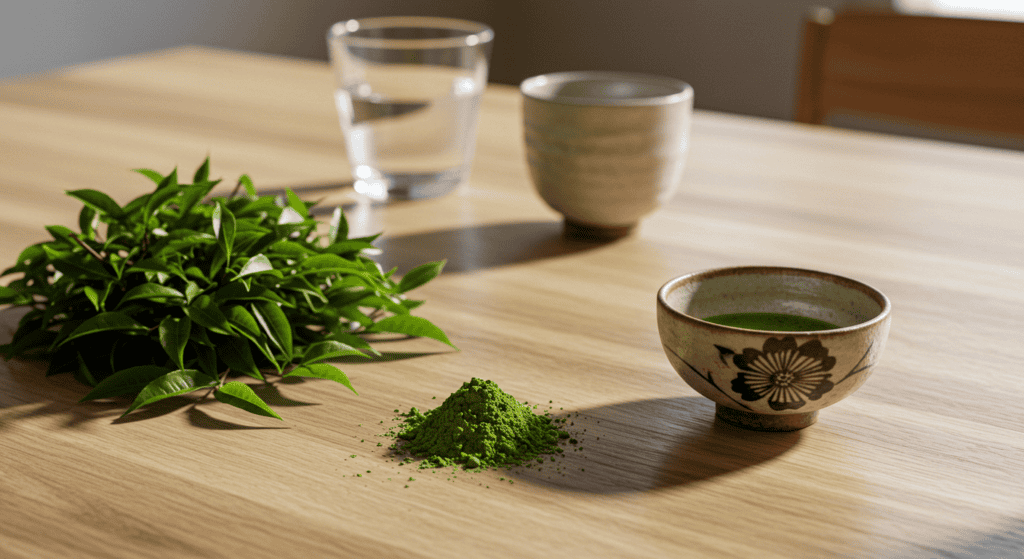
Green tea and matcha emerge from the same botanical family: Camellia sinensis. However, their journey from plant to cup differs dramatically.
Green Tea Varieties:
- Sencha
- Gyokuro
- Longjing
- Gunpowder
Matcha Varieties:
- Ceremonial grade
- Premium grade
- Culinary grade
While both originate from Camellia sinensis, matcha specifically uses shade-grown tea leaves from specific Japanese regions, primarily Uji in Kyoto Prefecture. Green tea, in contrast, has a more diverse and global cultivation landscape.
Green tea thrives in regions like China, Japan, India, and Sri Lanka, while matcha is uniquely tied to Japan, with the Uji region celebrated for its exceptional quality.
From Plant to Cup: Matcha vs Green Tea Processing Techniques
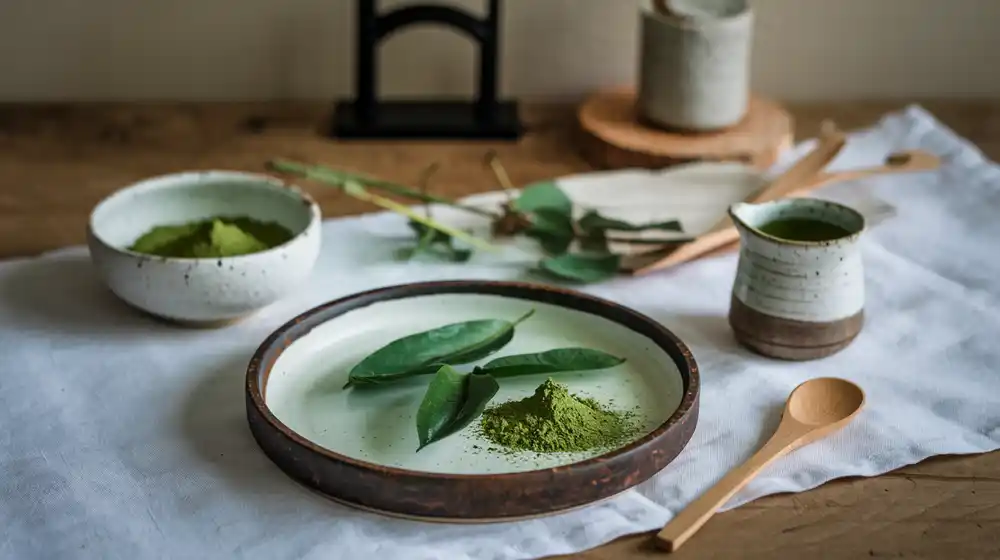
Let’s get into what makes your cup of tea super special, checking out the cool journey from plant to cup and the skill that goes into making it.
Organic Green Tea Production
So, green tea starts with some pretty careful picking done by people who really know how to choose the best leaves. Unlike other types of tea, green tea has to be processed right away after it’s picked to keep its bright green color and that nice light flavor.
Harvesting Techniques:
- Hand-picking: Most traditional method
- Mechanical harvesting: Used in large-scale production
- Seasonal considerations: First flush (spring harvest) most prized
Green tea stands out in the tea world due to its minimal oxidation. Immediately after harvesting, leaves undergo a critical heat treatment that stops oxidation, preserving their natural green color and delicate nutritional profile.
Processing Stages:
- Harvesting
- Withering (minimal)
- Heat treatment (pan-firing or steaming)
- Rolling
- Drying
Matcha Tea History: The Artisanal Craft of Tea Cultivation
Matcha’s amazing journey begins weeks prior to harvest in a revolutionary growing process that. So they shade tea plants fully with bamboo mats, blocking sunlight by, like, 90%. The entire process makes for a fantastic transformation of the tea leaves.
Shade-Growing Benefits:
- Increased chlorophyll production
- Elevated amino acid levels
- Richer, more complex flavor profile.
- Higher concentration of L-theanine
Matcha production is the artisanal craft of tea cultivation, where experienced tea masters carefully handpick only the youngest, most energetic leaves, assessing characteristics such as leaf age, color intensity, texture, and overall health of the plant to guarantee unmatched quality.
Unlike any other green tea, matcha undergoes a special last transformation. The tender leaves are dried and then ground on granite stone mills into a very fine powder, bright green in color, retaining the nutrient essence of the whole leaf.
Grinding Characteristics:
- Extremely slow process
- Takes up to 1 hour to produce 30g of matcha
- Maintains leaf’s full nutritional integrity
Matcha Green Tea Nutrition: The Impact of Processing
The processing methods directly influence the nutritional profile of both green tea and matcha. While green tea involves steeping and discarding leaves, matcha consumption means ingesting the entire leaf, resulting in a more concentrated nutrient intake.
Keeping matcha fresh and packed with nutrients depends on a few key factors: the level of heat during processing, how much oxidation occurs, how long it’s processed, and how it’s stored.
How tea is processed really affects how well our body can absorb its nutrients. Matcha stands out because its special preparation makes those nutrients easier to use, giving you a bigger health boost than regular green tea.
Why?
It’s super finely powdered, you’re drinking the whole leaf, and it’s handled in a way that keeps oxidation and processing to a minimum.
Green Tea and Matcha: Nutritional Powerhouse Comparison
Let’s dive into the good stuff—what makes green tea and matcha such nutritional superstars. We’ll break down its nutrient profile and see how it stacks up against other options.
Nutritional Value of Matcha vs Green Tea
Green tea and matcha do not have the same nutrient richness. Each has a unique combination of components that can have a significant impact on our journey to wellbeing.
Antioxidants are the body’s microscopic fighters, fighting cellular damage and oxidative stress. Let’s compare matcha and green tea.
| Antioxidant | Matcha | Green Tea | Significance |
| Catechins | 137x higher | Standard levels | Cellular protection |
| EGCG | Concentrated | Moderate | Cancer prevention |
| Polyphenols | Extremely high | Moderate | Heart health |
Matcha emerges as a true nutritional powerhouse, providing a broader spectrum of micronutrients:
Green Tea Nutrients:
- Trace amounts of Vitamin C
- Small quantities of B-complex vitamins
- Minimal mineral content
Matcha Nutritional Boost:
- Higher Vitamin A content
- Significant Vitamin C levels
- Trace minerals: Selenium, Zinc, Magnesium
- Enhanced chlorophyll concentration
Think of phytonutrients as nature’s way of keeping us healthy. The cool thing about matcha? The way it’s grown actually boosts these powerful plant nutrients, making it even better for you.
Matcha Advantages:
- Enhanced L-theanine content
- Higher chlorophyll levels
- More concentrated flavonoids
- Superior bioactive compound preservation
Caffeine Level in Matcha and L-theanine: The Dynamic Duo
The caffeine level in matcha is fundamentally different from traditional green tea, offering a more balanced energy profile.
| Tea Type | Caffeine Range | Release Characteristics |
| Matcha | 70-140 mg/serving | Slow, sustained release |
| Green Tea | 25-35 mg/serving | Quick, more sporadic |
Matcha’s caffeine works differently thanks to an amino acid called L-theanine. The two team up to give you what experts call “mindful alertness”—steady energy without the jitters, no crashes, and a calm focus that keeps your brain on point.
The way caffeine and L-theanine work together in matcha is like a perfect team-up for your brain: it boosts focus, clears your mind, calms anxiety, and helps you stay concentrated for longer without feeling drained.
Green Tea and Matcha Benefits: A Holistic Perspective
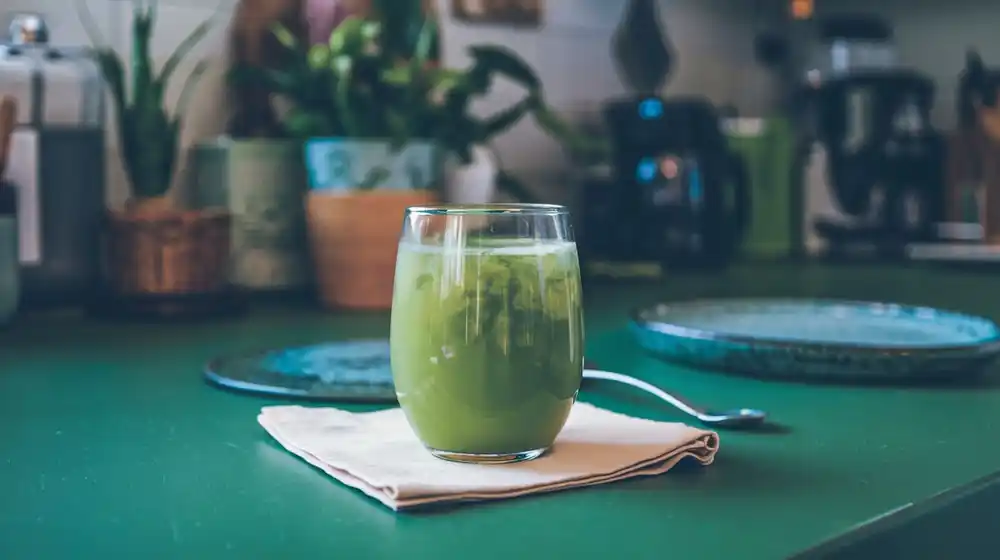
When it comes to health benefits, both matcha and green tea are wonderful companions, enhancing our overall well-being. They offer advantages that help us feel better and stay healthy.
Common Health Benefits
They do great things to keep us healthy, with benefits to help everyone feel good—like natural health boosters.
Antioxidant Protection:
- Neutralize free radicals
- Promotes cellular health
- Lower inflammation markers
- Potential anti-aging effects
Metabolic Support:
- Boost metabolism
- Increase fat burning
- Regulate blood sugar levels
- Support weight management interventions
Heart Health:
- Lower LDL cholesterol
- Increase arterial flexibility
- Support healthy blood pressure
- Decrease stroke risk
Specific Health Benefits of Matcha Tea
Although both beverages have many similar health advantages, matcha distinguishes itself with its own preparation and consumption techniques.
Whether you’re looking for a consistent energy boost or improved cognitive function, matcha has a stronger and longer-lasting influence on your health than normal green tea.
To learn more about the incredible health benefits of matcha, check out our detailed post on why this superfood is a must-have in your daily routine.
Matcha transcends traditional green tea in targeted wellness offerings:
Enhanced Mental Clarity:
- Sustained cognitive performance
- Reduced mental fatigue
- Improved neuroplasticity
- Support for meditation practices
Sustained Energy:
- Balanced, long-lasting vitality
- Minimal energy crashes
- Adaptogenic stress response
- Natural performance enhancement
Potential Detoxification:
- High chlorophyll content
- Support liver function
- Heavy metal elimination
- Cellular cleansing properties
Health Benefits of Green Tea
When we focus on green tea, we can see that it brings its own set of unique health advantages to the table, which are separate from matcha but equally excellent.
Weight Loss Management:
- Modest metabolic boost
- Appetite regulation
- Thermogenic properties
- Support for caloric deficit strategies
Digestive Health:
- Prebiotic properties
- Gut microbiome support
- Reduced inflammation
- Enhanced nutrient absorption
Immune System Support:
- Antiviral properties
- White blood cell stimulation
- Reduced infection susceptibility
- Natural immune modulation
Conclusion
Both green tea and matcha bring their own perks to the table—like sharper focus, steady energy, and better overall health. They’re not just drinks; they’re like your go-to teammates for feeling good.
Next steps?
Start by exploring traditional matcha recipes or experiment with your own to find the perfect blend for your taste. If you want dive deeper, into everything matcha, check out our complete guide to green tea matcha for all the must-know info, tips, benefits, products.
Remember, your health journey is ongoing, and it may begin with something as easy as selecting the perfect tea.
Allow curiosity to guide you, and let each cup represent a step toward a more energized and conscious you. The wellness world is waiting, one steep at a time.
Disclaimer: The information provided on this site is for informational purposes only and should not be considered medical advice. Always consult with a qualified healthcare professional before making any changes to your health regimen or treatment plan.

